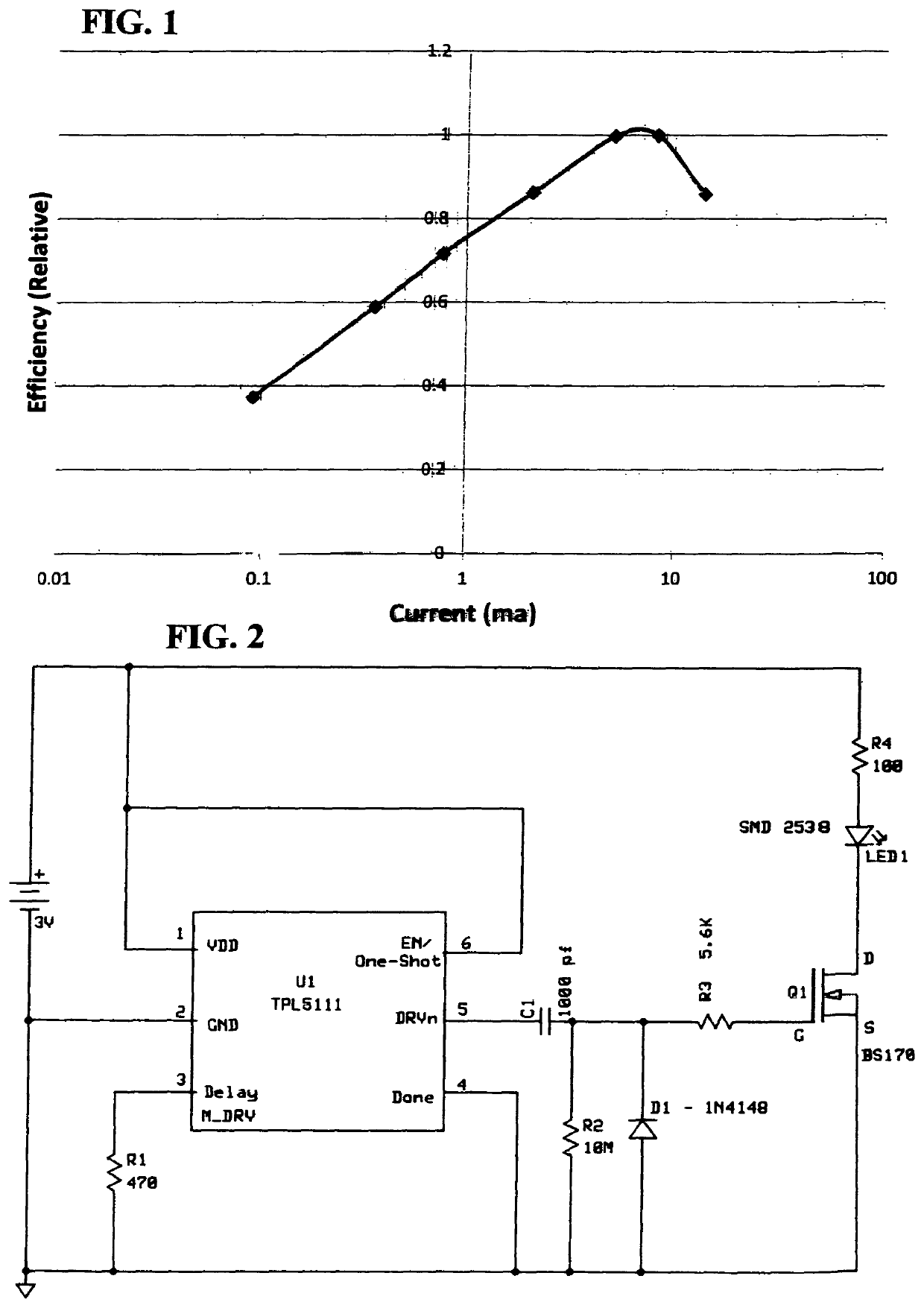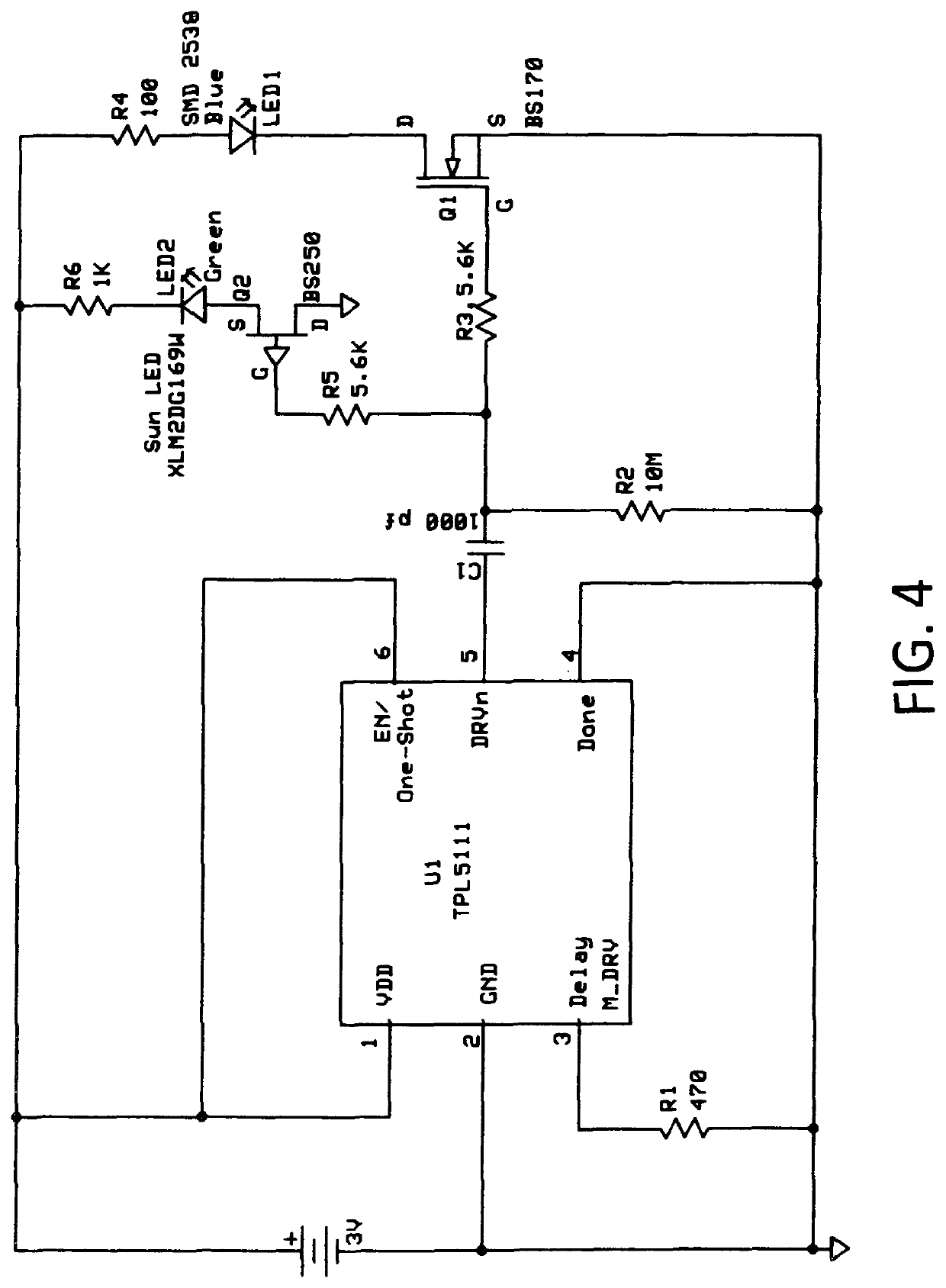Long-life-light system for deterring rats, mice and similar pets
a long-life, light-based technology, applied in lighting and heating equipment, light source combinations, with built-in power, etc., can solve the problems of not being able to effectively or efficiently deter rats and mice within these ranges, and achieve the effect of reducing the number of lights
- Summary
- Abstract
- Description
- Claims
- Application Information
AI Technical Summary
Benefits of technology
Problems solved by technology
Method used
Image
Examples
Embodiment Construction
[0017]Specific embodiments of the present invention include LED lighting systems for deterring rats and similar pests comprising at least one LED unit designed to emit light peaking at wavelengths within:[0018]50 nm of the 509 nm peak of the green sensitivity spectrum of rat's eyes, or[0019]26 nm of the 359 nm peak of the ultraviolet sensitivity spectrum of rat's eyes,
The claimed wavelength ranges are:[0020]Green: 459 nm to 559 nm, centered at 509 nm[0021]Ultraviolet: 333 nm to 385 nm, centered at 359 nm
Photon energy corresponding to the peak wavelengths are;
[0022]
PeakWavelengthsEnergyGreen509 nm2.43 Electron-Volts3.90 × 10−19 JoulesUltraviolet359 nm3.45 Electron-Volt 5.09 × 10−19 Joules
[0023]Systems can be designed for continuous operation or for pulse operation. Systems can utilize one or more LEDs and the colors can be a single color or a combination of colors. Systems can flash two separate colors such as ultraviolet and green alternatively. Strip LEDs can be utilized in some em...
PUM
 Login to View More
Login to View More Abstract
Description
Claims
Application Information
 Login to View More
Login to View More - R&D
- Intellectual Property
- Life Sciences
- Materials
- Tech Scout
- Unparalleled Data Quality
- Higher Quality Content
- 60% Fewer Hallucinations
Browse by: Latest US Patents, China's latest patents, Technical Efficacy Thesaurus, Application Domain, Technology Topic, Popular Technical Reports.
© 2025 PatSnap. All rights reserved.Legal|Privacy policy|Modern Slavery Act Transparency Statement|Sitemap|About US| Contact US: help@patsnap.com



